Present at Viet Duc Friendship Hospital ( Hanoi ) on the morning of May 10, little Vy (7 years old, character name has been changed) stood out with her thin, short figure, uneven shoulders, one side bulging. Her mother said her child had multiple congenital malformations and this was the first time she took her child to see a doctor.
Associate Professor, Dr. Dinh Ngoc Son, Head of Spinal Surgery Department, Viet Duc Friendship Hospital (Hanoi), said that this child's case is quite special, the child has multiple malformations in the shoulder, neck, hand, missing ribs, a deviated right shoulder, abnormally developed vertebrae, one side develops strongly and the other does not, leading to imbalance.
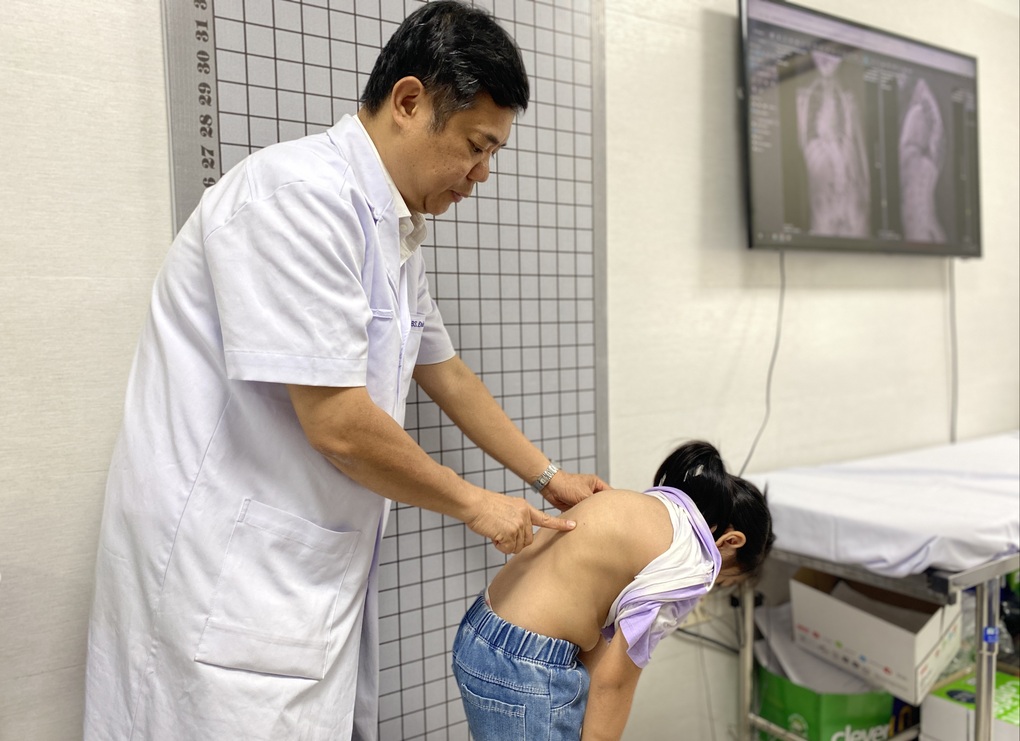
According to Associate Professor Son, the child's scoliosis is quite severe, with a curvature angle of up to nearly 90 degrees (Photo: NP).
The child has severe spinal deformity, the child's scoliosis is quite severe, the angle of curvature is up to nearly 90 degrees.
5-8 years old is an important stage of lung development in children. If not intervened, the angle of curvature can reach 100-150 degrees, the lungs cannot develop, gradually collapse, seriously affecting health. Cases of congenital scoliosis often progress very quickly.
"In this case, we will consult carefully with foreign experts to find the optimal surgical option for the child. This is a difficult surgery with many challenges in maintaining the child's development while correcting the spine," Associate Professor Son said.
He added that for these difficult cases, surgical robots, Navigation systems, O-arms and neuromonitoring can be applied during surgery. These are three cutting-edge technologies that help increase surgical precision, minimize the risk of complications and optimize the effectiveness of treatment and patient recovery.
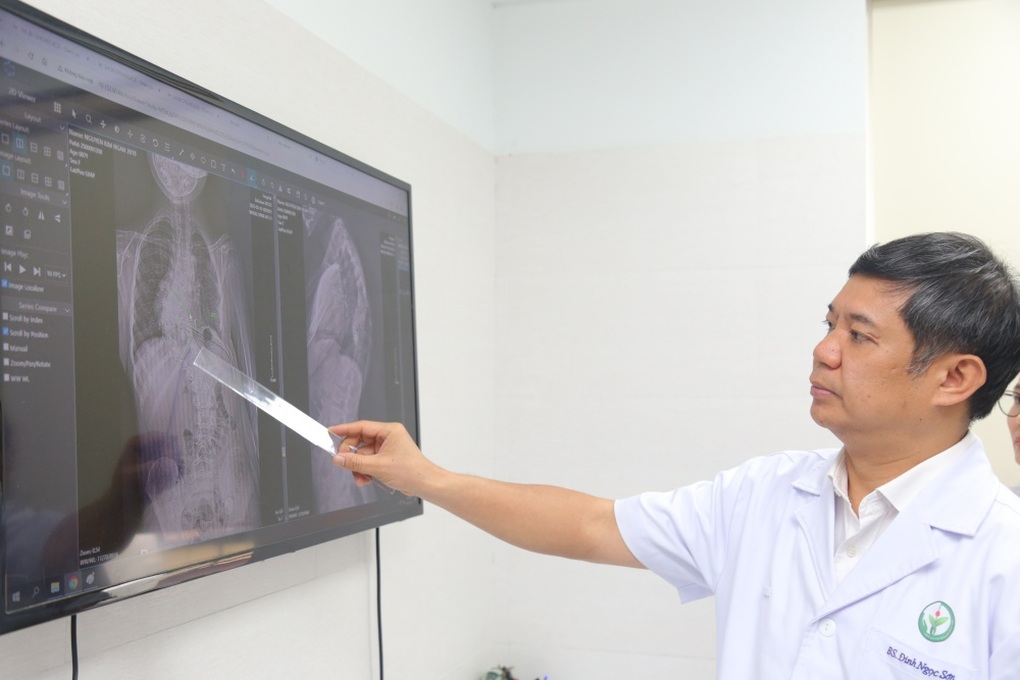
In this case, the child needs early intervention to prevent the scoliosis from progressing (Photo: NP).
About 0.5-1% of the population suffers from scoliosis.
According to Associate Professor Son, scoliosis is a fairly common disease in children with an incidence rate of about 0.5-1% of the population. Many cases have unknown causes or originate from congenital factors, neuromuscular diseases or prolonged incorrect living habits.
Early detection plays a key role in effective treatment, helping to prevent serious complications such as spinal deformities, affecting the lungs, chest, and even causing respiratory failure. In addition, the disease also affects children's appearance and psychology, causing them to lack confidence.
With timely treatment, children can avoid major surgeries or procedures and improve their overall quality of life.
"After two years of interruption due to Covid-19, many children did not come for examination, causing the degree of scoliosis to increase. Many children had a scoliosis angle of just over 20 degrees before, but 2-3 years later it was up to 70-80 degrees, some children had up to 100 degrees.
At this point, treatment will be much more complicated. If detected early, at a small level, the child may only need exercise, wearing a corset, simple surgery... However, when the disease has progressed severely, surgery is also difficult, the child may have to undergo surgery many times," Associate Professor Son said.
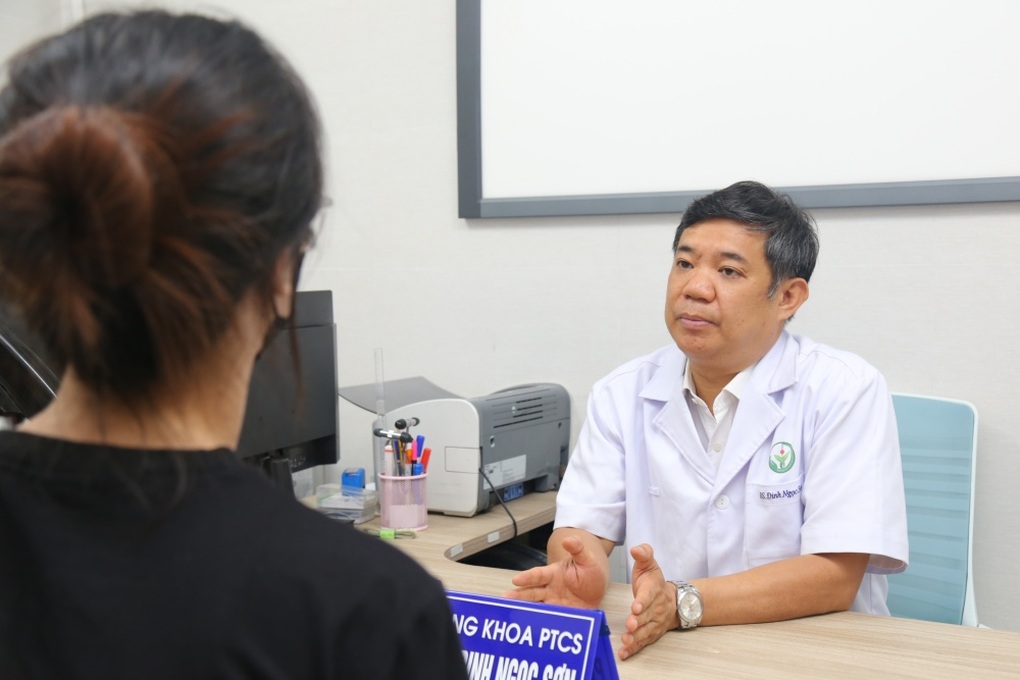
According to Associate Professor Son, early detection of children with scoliosis will make treatment simpler and more effective, and children may not even need surgery (Photo: NP).
Therefore, doctors advise that before the age of 10, parents should always pay close attention and monitor their children. If they see abnormalities in the spine such as crooked shoulders or a hump on the back when bending down, they should take them to the hospital for examination.
On May 10-11, Viet Duc Friendship Hospital (Hanoi) organized free examination, consultation and X-ray to screen and detect early kyphosis and scoliosis in children.
Signs of scoliosis in children
Associate Professor Son said that children with scoliosis often have the following easily recognizable signs:
The first is shoulder balance. Parents let their children stand straight against a wall, barefoot, and compare the two shoulders. If the two sides are not balanced, with one side higher than the other, the child may have a problem with the spine.
Second, let the child stand straight, with both arms hanging down to the body. For normal children, this will form a balanced triangle on both sides. For children with scoliosis, parents may see the shoulders skewed, with one arm close to the body and the other far from the body.
Third, look at the back, normally the child's spine is straight, but if the back looks S-shaped, it could be a sign of scoliosis.
Fourth is the Adam test, this method is applied to screen for cases of scoliosis in school children.
Specifically, the child stands straight, slowly bends forward, puts both hands on the knees, the parent observes the child from behind. Normally, the two shoulders will be symmetrical, if the spine is scoliosis, one shoulder will be higher, the opposite side will be lower, a hump will appear in the back.
Source: https://dantri.com.vn/suc-khoe/dieu-can-chu-y-de-phat-hien-tre-bi-veo-cot-song-truoc-10-tuoi-20250510124305453.htm



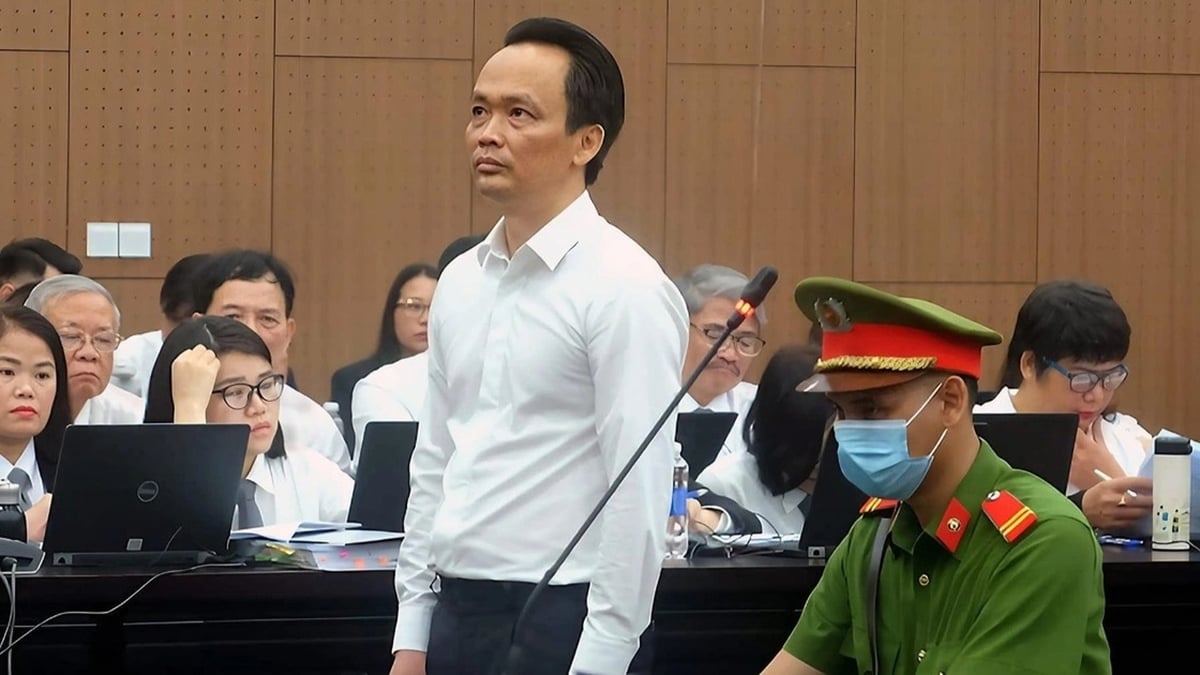


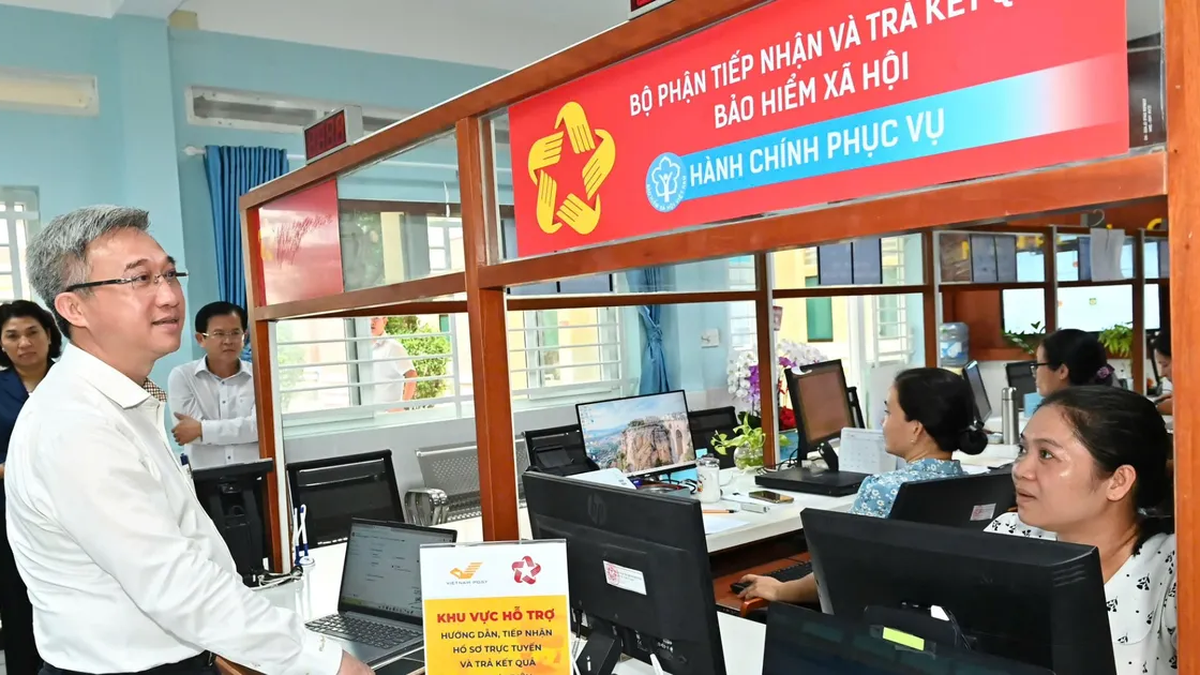
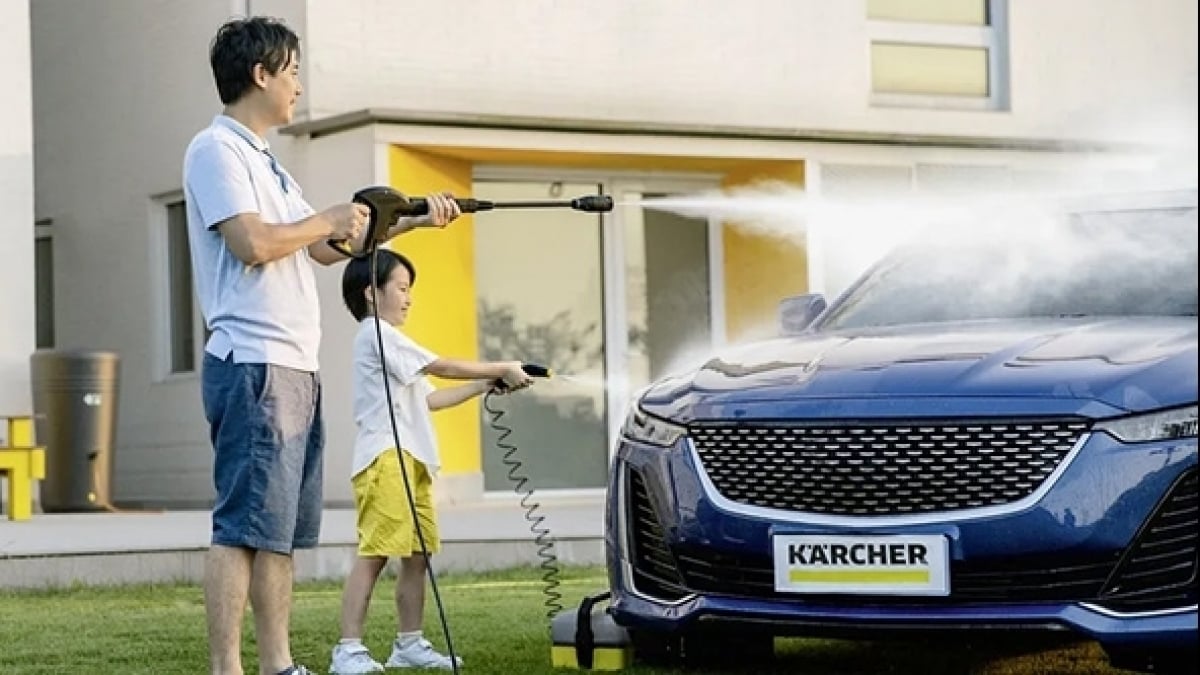
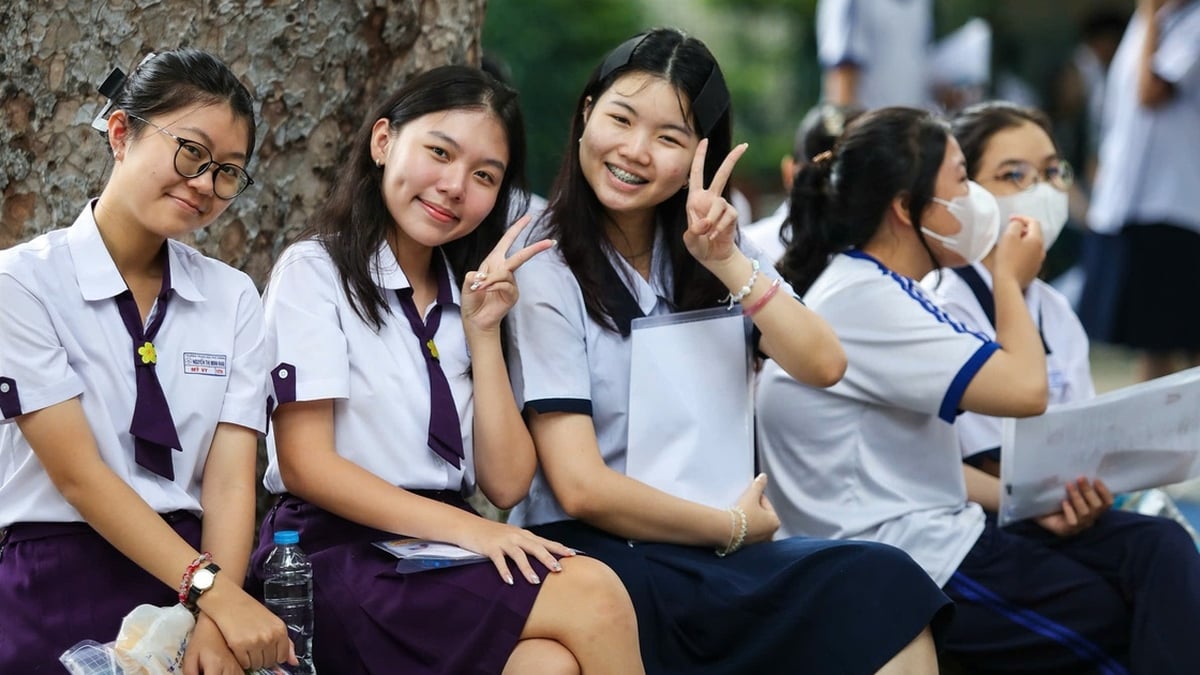










































![[Maritime News] More than 80% of global container shipping capacity is in the hands of MSC and major shipping alliances](https://vphoto.vietnam.vn/thumb/402x226/vietnam/resource/IMAGE/2025/7/16/6b4d586c984b4cbf8c5680352b9eaeb0)



















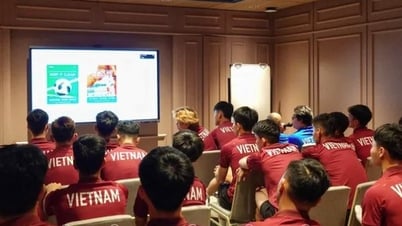

























Comment (0)